Three enclaves, one city
Sir Stamford Raffles was furious. In the three years since he had left Singapore for the outpost of Bencoolen, the nascent colony had grown in disarray. Instead of following his orders, appointed leader Major William Farquhar had taken a laissez-faire approach – attracting many traders but also vices that Raffles despised.
Farquhar tolerated the sale of opium and slaves, and sold gambling licenses to raise money for the cash-strapped administration. Still, his pragmatism helped to guarantee the survival of Singapore through its early years, and the colony’s rise posed a serious challenge to rival Dutch ports in Java and Sumatra.
The year was 1822 and Singapore was already booming. But in spite of the exponential growth in trade and population, the reality fell short of Raffles’ original vision. After removing Farquhar from his post, he set about bringing a sense of order to the colony. Laws and regulations were quickly put in place, and by the following year a police force and magistracy had been installed.
Raffles also paid careful attention to the island’s physical development. With the help of a committee led by engineer Lieutenant Philip Jackson, a gridded master plan was drawn up, dividing the town into several ethnic neighbourhoods or kampong, the Malay word for ‘village’.
To the east of the ‘European Town’, Kampong Glam was set aside for the native Malay population and Muslim immigrants from across the region. Centred on the palace (istana) of Sultan Hussain Shah of Johor – who had been exiled to the Riau Islands when his half-brother seized the throne – the district housed his entourage, communities of Arab merchants, Bugis traders from South Sulawesi and settlers from Sumatra.
Even in 1822, Raffles rightly predicted that the ethnic Chinese would make up the largest sector of the population. He marked the area southwest of the Singapore River as a ‘Chinese Kampong’, beginning with the precinct of Telok Ayer (literally ‘Water Bay’). But as the immigrant population swelled, the centre of Chinatown moved to an area where fresh water was delivered by animal-driven carts. For this reason the precinct gained the Chinese name Niu Che Shui (‘Ox-cart Water’) and the Malay name Kreta Ayer (‘Water Cart’).
To the north of Chinatown, Kampong Chulia was laid out for Tamil settlers from southern India, but over time the community would migrate across the river to the district around Serangoon Road. Known as Tekka to its Tamil residents, Little India would soon be dominated by cattle and textile traders. Curiously, Tekka became the chosen location for the villas of several successful Chinese businessmen, along with a temple dedicated to Guanyin, the Chinese Boddhisattva of Mercy. The reverse had already happened in Chinatown, where the oldest Hindu place of worship in Singapore, Sri Mariamman Temple, first took shape in 1827.
Nearly 200 years after the Jackson Plan was drawn up, its impact can still be keenly felt. But what Raffles could not envisage was the cross-cultural pollination that evolved – and continues today – in Singapore’s ethnic kampongs. ◊





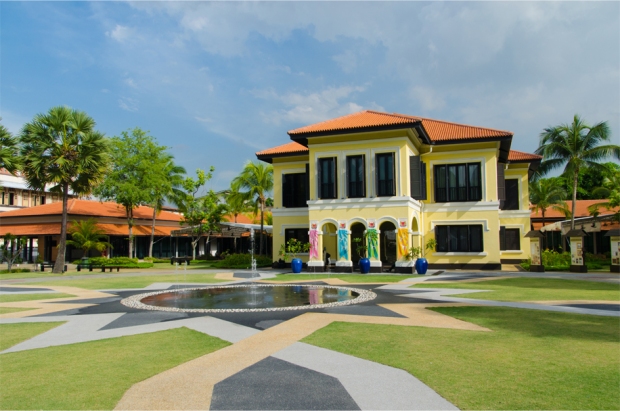
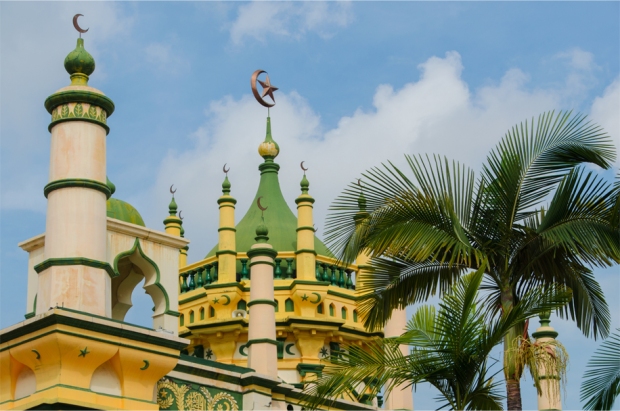
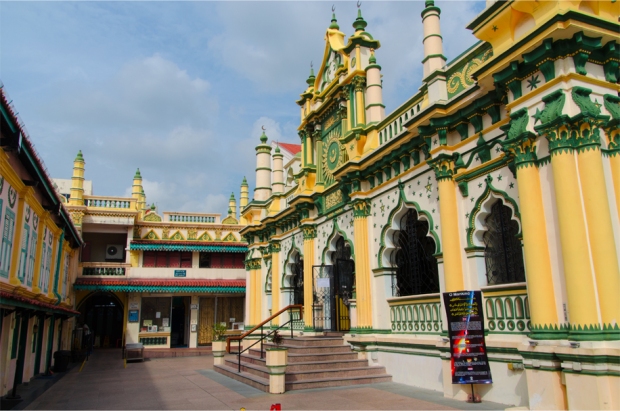

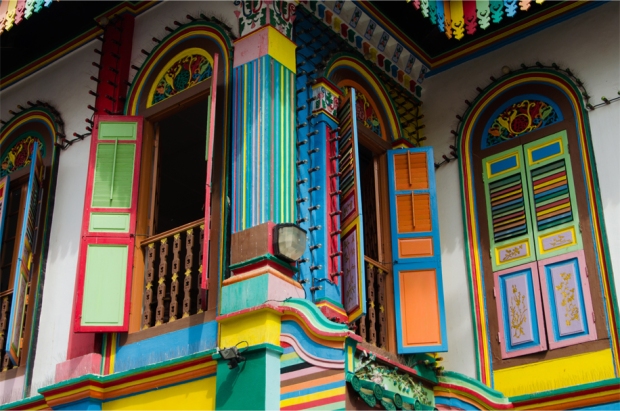
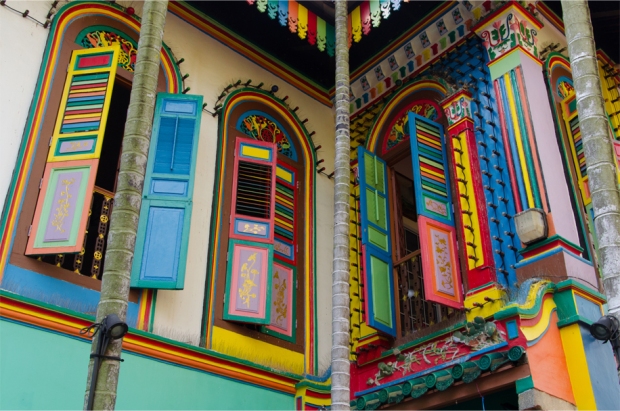


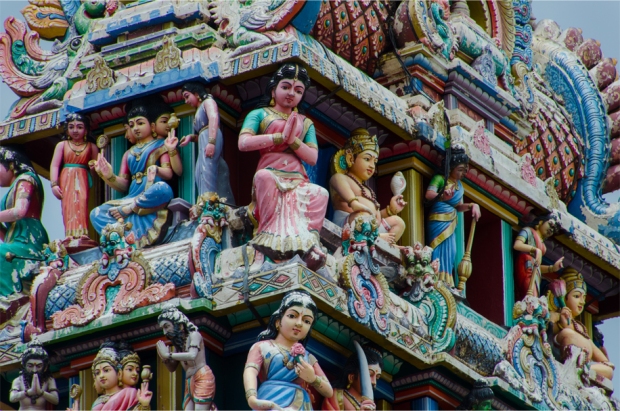
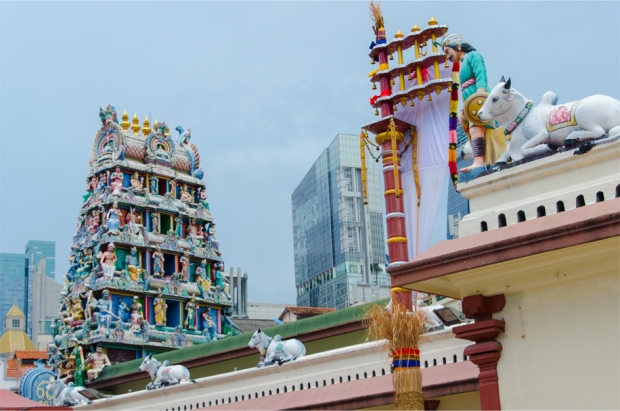
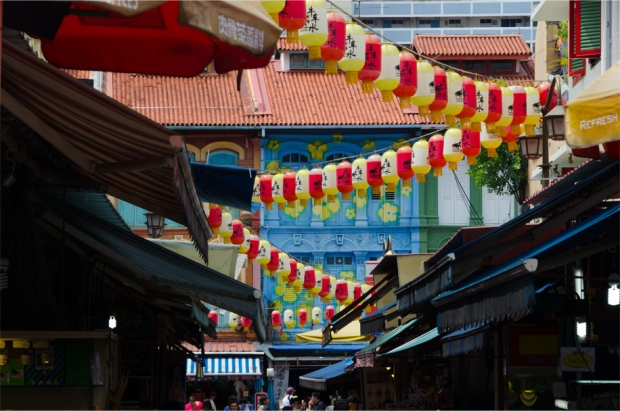




Such colour. Wonderful post 🙂
Thanks for reading. 🙂
Visiting Little India, Chinatown and Kampong Glam was such a visual treat. I’ve always been enticed by the rich sculptural details of a Tamil temple since my first visit to KL, meanwhile the tree-lined street to Sultan Mosque reminded me a little bit of Bandar Seri Begawan, only the one in Singapore was much smaller. I’m glad the weather was relatively nice when we went to those kampongs.
I think my favourite building was Abdul Gafoor Mosque in Little India – the exquisite details made it look like something out of a fairytale, or possibly even 1001 Arabian Nights!
Nice colors
Yes, although the old Chinese villa was a little over the top… that said, it would make a great guidebook cover.
Loved the colorful photos AND the history!
Thanks very much! 🙂
Love how you have captured some fav images part of regular Singapore wanders. 🙂
I wish I spent more time walking through those neighbourhoods… they are such a wonderful contrast to the newer parts of town. 🙂
Gorgeous photos and color of this wonderfully historical place. The Abdul Gafoor Mosque does indeed remind me of something out of 1001 Arabian Nights.
Thank you, Angeline – I’m glad these beautiful buildings are so well-kept!
I think Singapore became worth visiting just to see Tan Teng Niah’s villa! Gorgeous!
A.
The colours certainly won’t disappoint you, Alison!
I love the way in which you opened this post — telling the history as if it is a story.
Thanks Jennifer. It took a while to think of a more interesting approach!
Great article James, I was never impressed with Little India myself, but enjoyed the others you mentioned a lot. Regarding Abdul Gafoor Mosque – I didn’t know that was there actually…must check it out next time. 🙂
Thank you, Lee. I found the mosque by chance through an article online – I did read your post about Little India but decided it was still worth a look. 🙂
I think Little India is what you make of it. The history and culture surrounding it as you point out is pretty impressive, but there was a side to it I personally didn’t like but hey-ho – guess I’m more of a Chinatown guy. 😉 I researched that mosque earlier so now I know even more about it, but I would still like to visit it in person. 🙂
Amazing!
The multiculturalism really comes through in Singapore!
What a riot of colours James! Repainting the residence of Tan Teng Niah must be quite a project!!! 🙂 The mosque is indeed gorgeous. Thanks for this unusual perspective on Singapore. Can’t believe I have not even transited through the place!
I was wondering how you’d feel about those crazy colours, Madhu! I find them a bit too garish but then again, they make the residence very photogenic. Perhaps Singapore would be a worthy stopover on the way to Indonesia. 🙂
Great share! Now I understand why Singapore has three ethnical areas. Thanks to the policy, now those three enclaves become three popular tourist destinations of Singapore 😉
Anyway, when I was at Kampong Glam last June, I didn’t see any palace. Ada di sebelah mananya Kampong Glam ya?
Well Matius, I must say that Istana Kampong Glam is not exactly an impressive structure! In reality it is more like a restored house. Ada di sebelah Masjid Sultan – you’ll find it just a few steps away down a side street. 🙂
Oh, maybe that’s why I didn’t notice it when I walking down the street 😀
Great write-up!
Thank you!
So presumably Singapore is easy to get around..by foot/bike or transit? Some of those neighbourhoods looks so organized/clean and not dilapidated. Is this what Singapore is like?
Yes, Singapore is fairly walkable although the heat (and humidity) makes it advisable to take mass transit – the city has an excellent metro and bus system. I would say cleanliness is something of an obsession there – the historical neighbourhoods are generally spruced up with fresh coats of paint.
Gorgeous colors everywhere!
Yes, these old neighbourhoods were so photogenic!
Very colorful and interesting post 🙂 And thanks for reminding my memories from short visit, before couple of years… Bye. Kamila
Thank you, Kamila – I’m glad it stirred up some fond moments from your own trips. 🙂
Amazing and colorful story about magical place…. You really touched my imagination and I hope, one day, I will go there and I will discover this “fairy land” 🙂
I’m sure you will in the not-too-distant future… Singapore is one of Asia’s gateways after all! Dziękuję for the lovely comment. 🙂
I hope so ! Haha, dziękuję bardzo 🙂